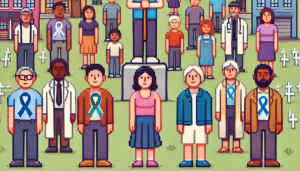
Resilience in Health Systems: A Global Imperative
One thing has become clear in the face of crises like the Ebola outbreak and the COVID-19 pandemic: the world’s health systems need to be resilient.
But what does that mean?
In everyday terms, resilience is the ability to bend without breaking, to adapt, recover, and continue to serve even when hit by disaster. For health systems, this means providing care amid chaos—whether it’s a disease outbreak, a natural disaster, or another catastrophe.
Recent research, published in PLOS Global Public Health, highlights the importance of building resilient health systems and underscores the need for a unified framework to measure and enhance resilience on local, national, and international levels. This scoping review not only delves into past disasters and their lessons but also provides practical recommendations for health practitioners and policymakers to improve systems going forward.
Why Resilience Matters
Health systems are the backbone of any society’s ability to cope with crisis. From the devastating 2014 Ebola outbreak in West Africa to the ongoing global COVID-19 pandemic, we have seen health systems under tremendous strain. During these crises, countries with weak health infrastructures struggled to respond effectively. On the flip side, nations with resilient systems could adapt, continue delivering care, and protect their populations more effectively.
For example, during the Ebola outbreak, many West African countries faced serious challenges. New cases emerged in previously unaffected communities, and efforts to contain the virus were often disjointed due to a lack of resources and inadequate coordination. In contrast, during the 9/11 terrorist attacks, New York City’s health system, strengthened by robust governance and leadership, was able to save lives and restore normalcy relatively quickly.
Resilience, then, isn’t just about having strong hospitals or enough doctors. It’s about being able to anticipate shocks, adapt to challenges, and reconfigure operations quickly to meet rising demands.
Lessons from the Past
The research emphasizes that we can learn valuable lessons from past disasters. The West African Ebola outbreak revealed gaps in disease surveillance and global collaboration. The COVID-19 pandemic highlighted similar vulnerabilities, even in health systems that had previously achieved Universal Health Coverage (UHC).
While the pandemic affected countries globally, those with strong governance, rapid information-sharing systems, and flexible resource allocation responded better. This isn’t just theoretical—these factors translated into fewer deaths, faster recovery, and more sustainable health services.
For instance, the Rockefeller Foundation’s City Resilience Framework defines public health as a key goal for resilient cities, focusing on maintaining quality healthcare and emergency response capabilities. The WHO’s Health Systems framework, another model, maps out the building blocks needed to maintain service delivery during crises. Both models highlight the critical role of strong leadership and adaptable systems in protecting populations.
Key Elements of Resilient Health Systems
This study identified several essential components of resilient health systems:
1. Leadership and Governance: Resilient health systems are characterized by strong leadership that can coordinate efforts across sectors and countries. During times of crisis, effective governance becomes more important than ever, guiding decision-making, resource allocation, and communication.
2. Resources and Infrastructure: Health systems need to scale up quickly during emergencies, from human resources to physical infrastructure. One of the study’s key recommendations is repurposing existing resources and infrastructure to meet surging demand. For example, local manufacturing of ventilators and personal protective equipment (PPE) can be critical during health crises like COVID-19.
3. Global Collaboration: No country is an island. Global cooperation—whether in sharing data, resources, or best practices—is critical for navigating crises. This study calls for deeper cross-national learning and collaboration. By looking at what works in different countries, we can build more resilient systems globally.
4. Community Engagement: Resilient health systems aren’t just top-down. Communities play a vital role in responding to and managing crises. Engaging local leaders, understanding cultural contexts, and fostering trust can significantly improve the effectiveness of health systems’ response to shocks.
5. Social Determinants of Health: Health systems’ resilience goes beyond medical care. It encompasses the broader social determinants of health, such as education, housing, and social protection. Strengthening these aspects can reduce vulnerability and improve overall health outcomes during crises.
Towards a Unified Framework
One key takeaway from this research is the need for a unified, global framework to assess health systems’ resilience. The review identified six different frameworks used by countries and organizations worldwide, each with its strengths and weaknesses.
While there’s no one-size-fits-all solution, a cohesive framework that incorporates elements like leadership, resources, community engagement, and global collaboration would allow countries to assess and improve their systems more effectively. This would also foster better preparedness, ensuring that health systems can absorb future shocks, whether it’s a pandemic, a natural disaster, or a conflict.
The importance of this cannot be overstated. Building resilient health systems isn’t just about responding to the next pandemic—it’s about ensuring that every person, everywhere, has access to the care they need when disaster strikes.
Join the Conversation
What role do you think local communities play in building resilient health systems? How can we ensure that health systems in low-resource settings are equipped to handle future crises? Share your thoughts and join the discussion in the comments or on social media!
Be Part of the Public Health Movement!
Join thousands of professionals and enthusiasts who rely on our curated articles to stay informed. Subscribe to our newsletter for free and be the first to know about the latest public health breakthroughs. Your subscription helps bring science to the forefront of community health. Click below!



